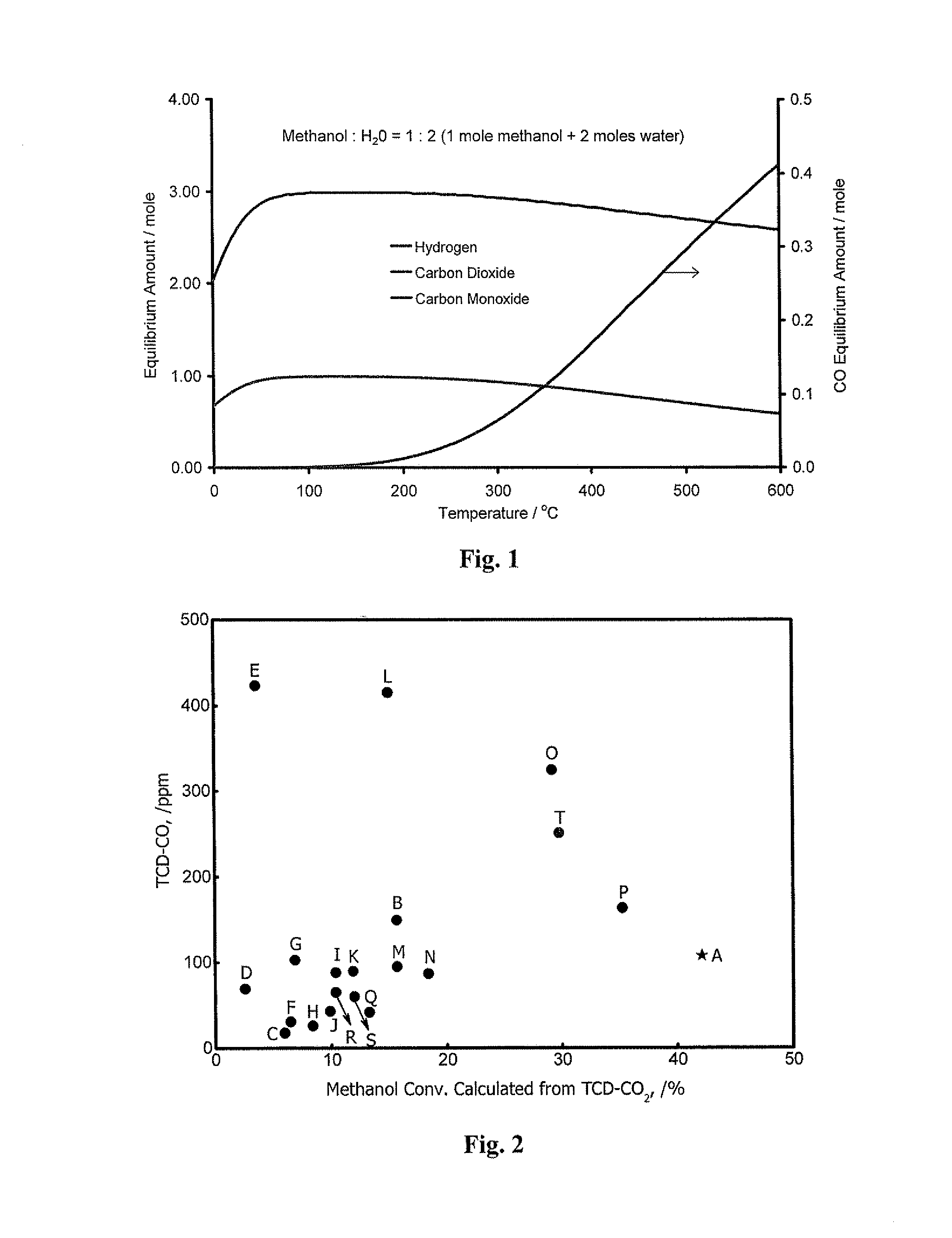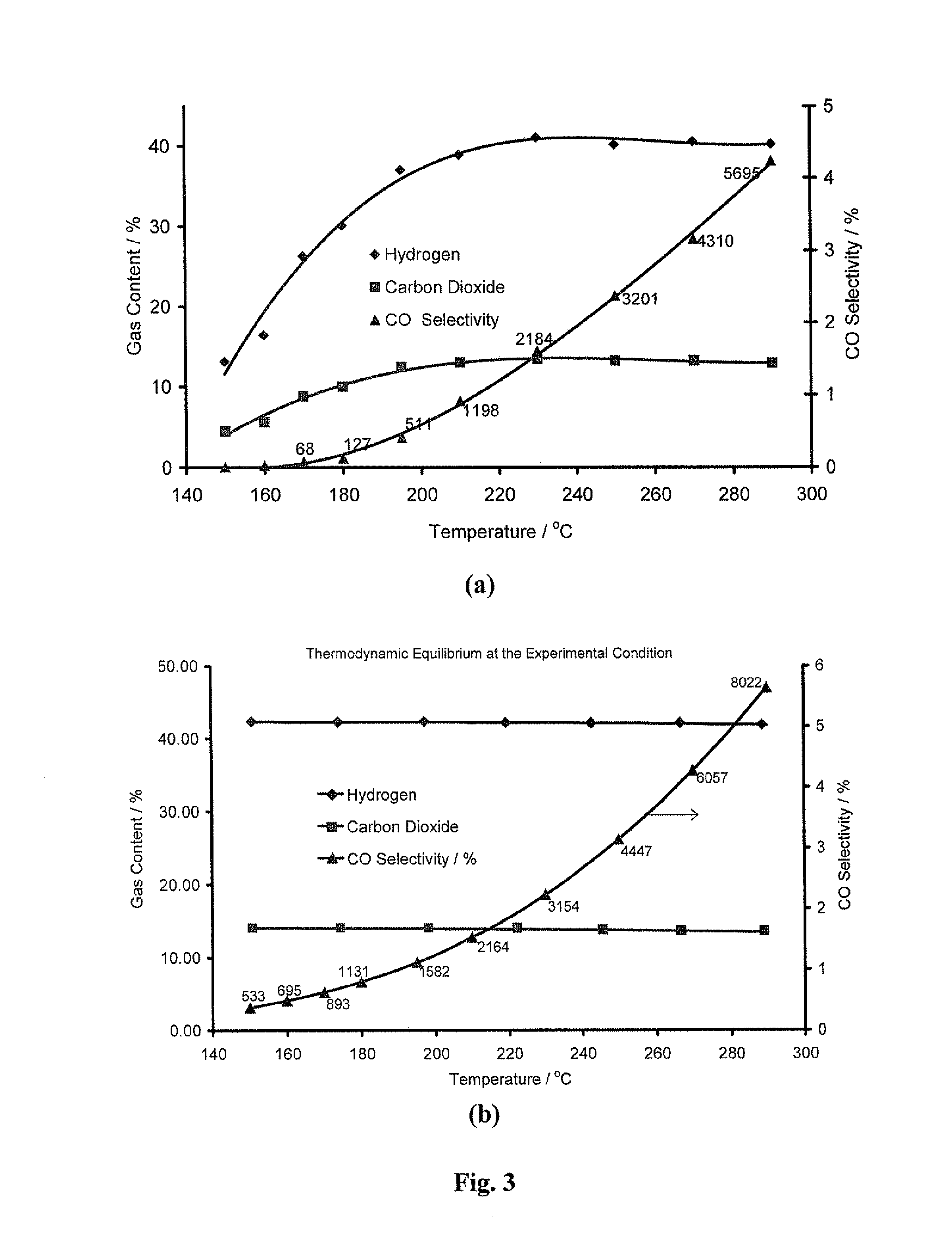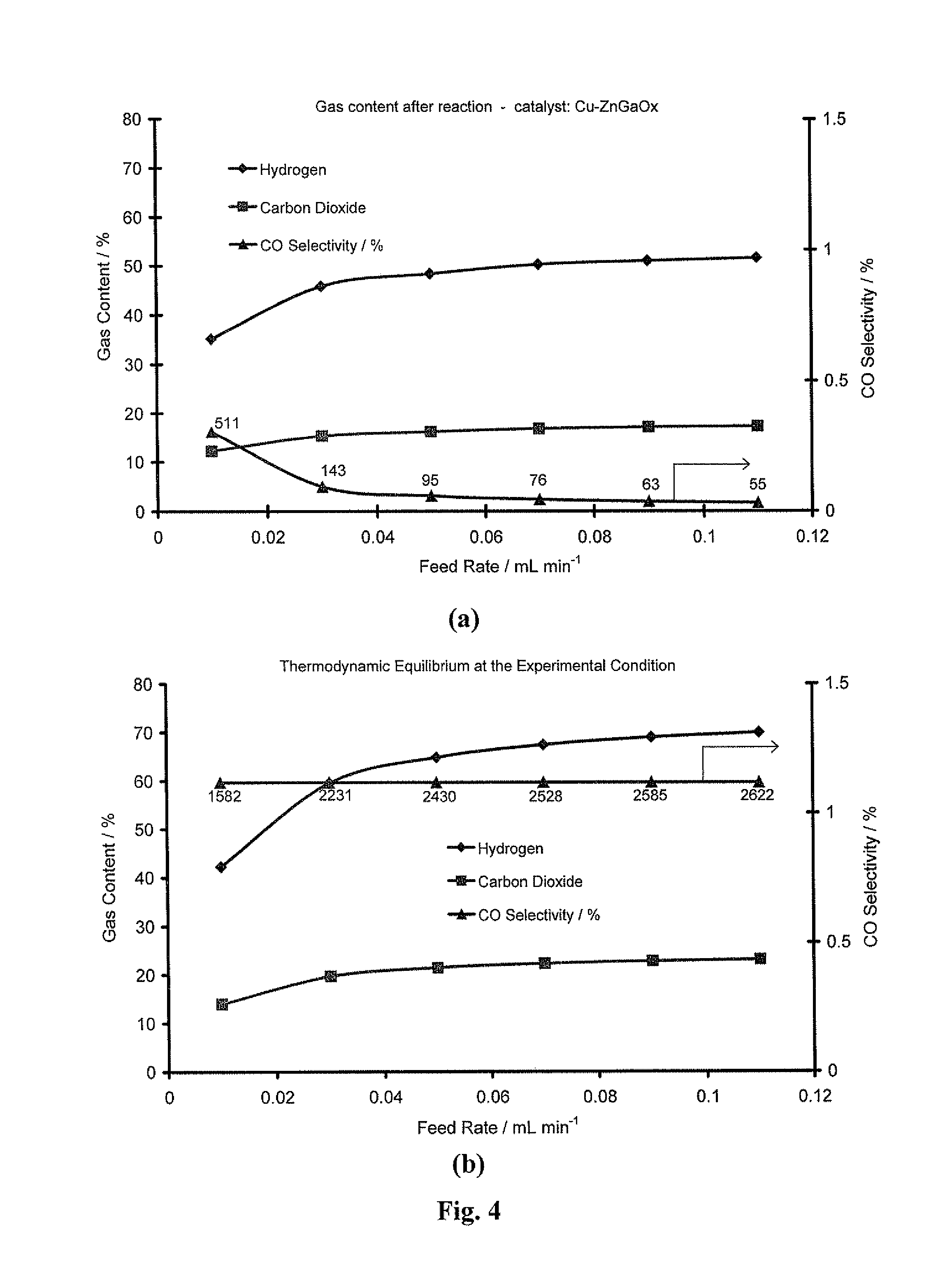Steam Reforming Of Methanol
- Summary
- Abstract
- Description
- Claims
- Application Information
AI Technical Summary
Benefits of technology
Problems solved by technology
Method used
Image
Examples
example 1
Non-Syngas Direct Steam Reforming (NSGDSR) of Methanol to Hydrogen and Carbon Dioxide Over CuZnGaOx Catalysts at Low Temperature
[0165]In this study, NSGDSR has been carried out at atmospheric pressure, temperature range of 150-200° C., steam to methanol molar ratios ranging from 1-20. Effects of reaction temperature, contact-time, steam to methanol molar ratio and catalyst composition on methanol conversion, CO selectivity, and hydrogen productivity are thus evaluated.
Catalyst Preparation
[0166]Typically, Cu based catalysts such as CuZnGaOx, were co-precipitated from a 100 mL aqueous solution containing 3.03 g of Cu(NO3)2.xH2O (Aldrich), 2.40 g of Zn(NO3)2.6H2O (Aldrich) and 2.15 g of Ga(NO3)3.xH2O (Aldrich) by using a Na2CO3 aqueous solution (prepared by dissolving 3.50 g of Na2CO3 in 100 mL DI water), both solutions were dispensed at 0.05 mL / sec to a high-speed stirring (1500 r / min) 300 mL DI water, with the pH controlled between 6 and 7. Then, the resulting precipitate was aged in...
example 2
Rationalising the Behaviour of Cu / Zn / Ga Oxide Catalysts in Low Temperature Steam Reforming of Methanol
[0178]Having identified 43% Cu—ZnGaOx, as a new high performance catalyst, the focus of this project was to investigate differences between the catalysts containing differing levels of Cu, Zn, Ga and combinations thereof. It was decided that the comparisons should be made between the activities observed at 195° C. rather than 150° C., because the differences in MeOH conversion and CO production were more pronounced. To this end, a variety of characterisation techniques were employed to elucidate the structural & mechanistic properties of the catalyst, and comparisons were made by varying the support composition and changing the Cu-loading. Table 3 shows the difference in activity for a range of Cu-based catalysts:
TABLE 3Activity data for Cu-based catalysts on Zn / Ga supportsCatalystMeOH Conversion (%)CO Concentration (ppm)Johnson Matthey29.3251HiFUELT R120 catalyst15% Cu—ZnGaOx8.3117...
example 3
CO2 Hydrogenation to Methanol
[0229]
TABLE 10Results for CO2 hydrogenation to methanol: comparingcatalysts of the invention with an industrial catalystCH3OHCOConver-Select-CarbonSample% Yield% Yieldsion / %ivity / %balance / %43% Cu—ZnGaOx 25.57.533.077.289.6(1st)43% Cu—ZnGaOx 25.78.334.075.590.7(2nd)JM HiFUELT 24.28.432.674.392.3R1201st and 2nd correspond to 1st testing and 2nd testingWeight used: 0.2 gComposition of gas feeds: H2 / CO2 = 3:1Pressure: 5 MpaTemperature: 503KFlow rate: 25 ml / minGC analysis of products after the initial 2-3 hsThe Industrial catalyst (JM-HiFUELT R120 catalyst) was tested under 513K for comparison.
TABLE 11Results for the reverse reaction: steam reformationof methanol to H2 / CO2:comparing catalysts of theinvention with an industrial catalystMeOHCO Concen-CatalystConversion (%)tration (ppm)JM-HiFUELT 29.3251R120 catalyst43% Cu—ZnGaOx33.4108Weight used: 0.40 g + 0.40 g silicon carbideLiquid feeds: CH3OH:H2O molar ratio = 1:2Liquid flow rate of 0.1 ml min-1 and then m...
PUM
| Property | Measurement | Unit |
|---|---|---|
| Temperature | aaaaa | aaaaa |
| Fraction | aaaaa | aaaaa |
| Fraction | aaaaa | aaaaa |
Abstract
Description
Claims
Application Information
 Login to View More
Login to View More - R&D
- Intellectual Property
- Life Sciences
- Materials
- Tech Scout
- Unparalleled Data Quality
- Higher Quality Content
- 60% Fewer Hallucinations
Browse by: Latest US Patents, China's latest patents, Technical Efficacy Thesaurus, Application Domain, Technology Topic, Popular Technical Reports.
© 2025 PatSnap. All rights reserved.Legal|Privacy policy|Modern Slavery Act Transparency Statement|Sitemap|About US| Contact US: help@patsnap.com



